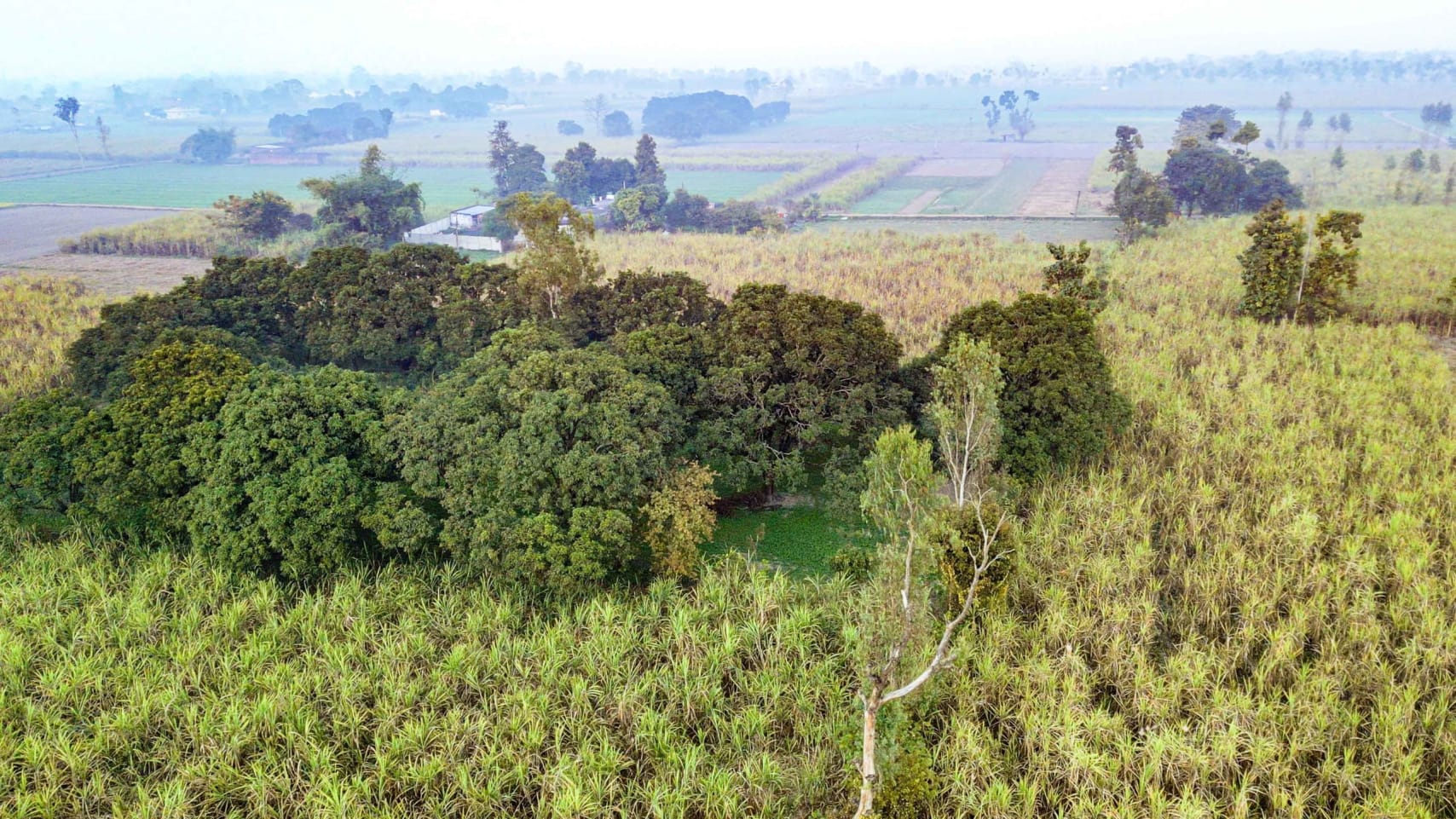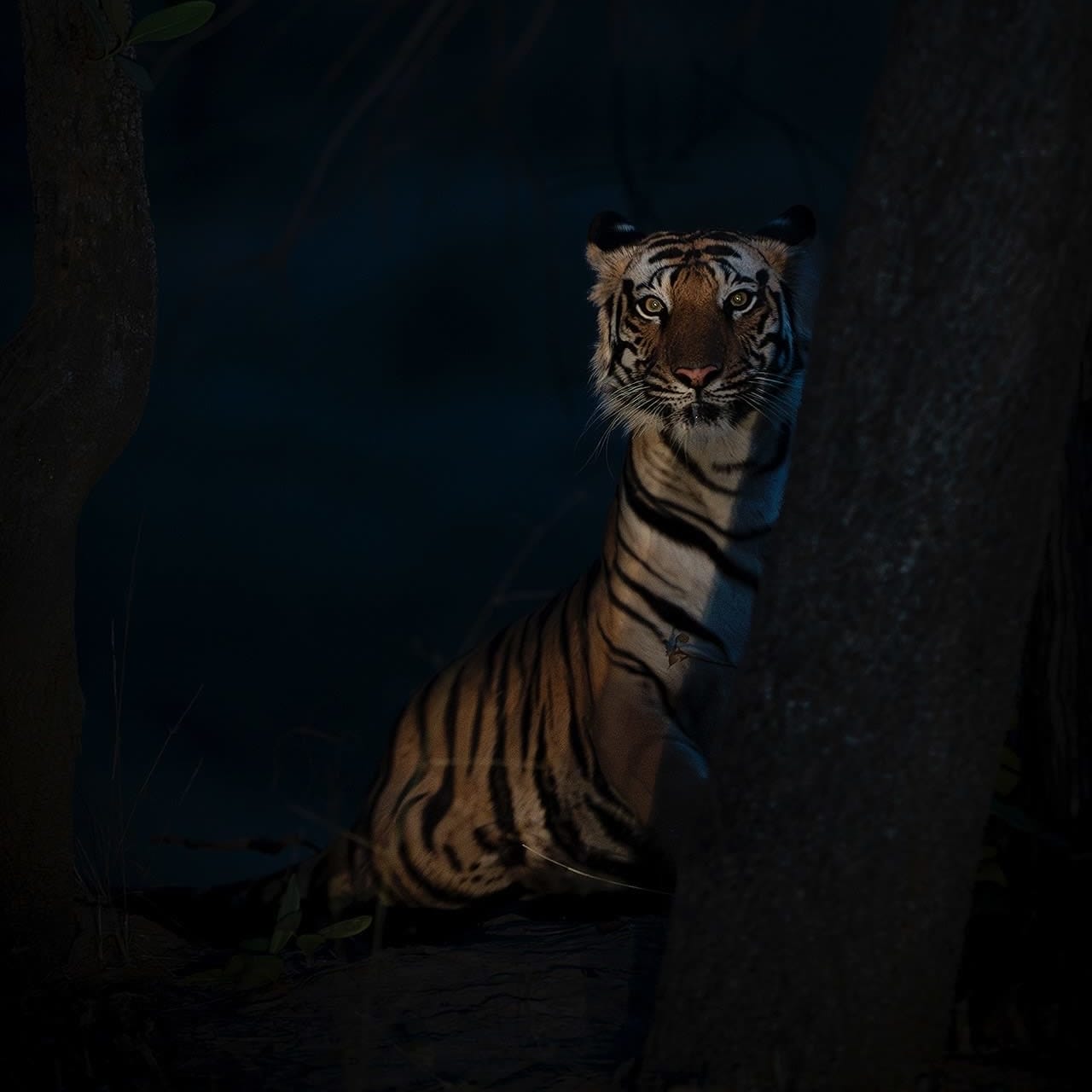 Listen to this article
•
15:34 min
Listen to this article
•
15:34 min
As the car came to a stop, the atmosphere was thick with tension. Villagers moved with urgency, their faces etched with concern. It wasn’t without reason — a tigress had been seen roaming the village, walking the same paths as the people who lived there. Her official name was unknown, but now, let’s call her the Gola Tigress, and this is her story.
This encounter was one of many in a long journey of understanding carnivores and their movement across landscapes. Led by Ms Divyashree Rana, a PhD student at the National Centre for Biological Sciences, India, the research focused on corridor connectivity — how large carnivores, especially tigers, navigate fragmented habitats. Our fieldwork wasn’t confined to forests where we collected signs of their presence; it also took us through villages like this one, where human-wildlife interactions unfolded in complex and often unpredictable ways. In Uttar Pradesh, where forests are heavily fragmented and agriculture dominates the land, understanding how species adapt to shifting boundaries was crucial — but more on that later.

Cover Photo: A tiger at dusk. Photo: Shivang Mehta
Our research didn’t happen in isolation but in collaboration. Multiple stakeholders were involved, each playing a role — forest officials, researchers, conservationists, and, most importantly, the communities living alongside these animals. The people in these villages were not just bystanders, but active participants in this evolving story of coexistence. Their experiences, observations, and challenges provided insights that data alone could not capture. No two days in the field looked the same. Some were spent deep in the forests, tracking carnivores, while others brought us face-to-face with communities that lived alongside them. In places like this village, where a tigress and her cubs had made a temporary home, these interactions challenged conventional understandings of wildlife behaviour and coexistence.
One of the defining features of this landscape was the sugarcane fields. For those unfamiliar with Uttar Pradesh’s terrain, these fields stretched endlessly, forming an almost impenetrable green wall. Nearly 90 per cent of the region’s agriculture was dominated by sugarcane, and in some ways, these fields mimicked a forest. They offered cover, shelter, and, importantly, food sources — prey species like wild boars, hog deer, and spotted deer thrived here. This reshaped the way we traditionally thought about tiger habitats. Were these animals venturing out of the forests, or had these fields become part of their living landscape? The answer wasn’t straightforward.
When we reached the village, the situation had already been unfolding for days. A tiger had taken down livestock — two goats, one carried away. The immediate assumption was a leopard, a species known to manoeuvre well in human-dominated spaces. That assumption, however, was soon proven wrong. The village chief’s words quickly shifted the narrative: “Meri himmat tut gayi hai.” (“I’ve lost all my courage.”)
And who could blame him? This wasn’t just any tiger. It was a mother — with three cubs — who had taken up residence not in the depths of the forest but within the very landscape of human life. To dispel any doubts that this was the work of a leopard, a local showed us a video of the tigress crossing a road with her cubs, vehicles pausing as she carried the last one across. The scene was surreal — tigers moving through human settlements, people watching, waiting.
This was a critical situation, and managing such events required constant monitoring. That responsibility often fell on forest watchers — local staff trained to observe wildlife movement and mitigate conflicts. One such watcher had been stationed nearby, not to protect people from the tigress but to ensure she and her cubs remained unharmed. His presence was a reminder of the delicate balance at play, where caution and tolerance coexisted in quiet, unspoken ways.
In a potato field nearby, the tigress and her cubs had been seen playing, seemingly at ease in the open. It was a moment that challenged conventional understanding. What did it mean when a species often associated with deep forests was found comfortably moving through agricultural fields? Was this adaptation, or was it something else?
Perhaps the most striking moment came at an elderly woman’s home. Her modest house stood at the edge of the village, and right on her veranda, just steps from where she slept, were the fresh tracks of the tigress. When asked if she was afraid, she waved a hand dismissively: “Agli baar dantenge usko”. (“Next time, I’ll scold her.”)
There was no panic, no urgency, just a quiet resilience. A predator had walked past her home, yet life carried on as usual. This was not an absence of fear but an acceptance of reality.
Here was a predator, one of nature’s most formidable creatures, roaming a village as if it were her kingdom. And here were humans, not rushing to harm her but instead finding ways to coexist. This encounter wasn’t just about a tigress or her cubs. It was about survival, hers and theirs. It was about adaptation, tolerance, and the thin, fragile line separating wild from domestic. The tigress from the sugarcane forest and potato fields, the tigress in our backyard — it was a story of two worlds colliding and, somehow, neither falling apart.
But this balance raises uneasy questions.
Can such coexistence truly last, or is it a ticking time bomb? The villagers may show resilience and tolerance today, but how long before fear turns into retaliation? How sustainable is this adaptation by tigers — living in sugarcane fields and wandering into human settlements? Is this a testament to their flexibility or a sign of deeper ecological problems we are yet to address?
These are not questions with immediate answers. They are questions for another day.
The Gola Tigress may not know it, but she and her cubs are part of a bigger story, the story famously called “sugarcane tigers”. But for now, she walks through the sugarcane fields, moving through a world that is neither entirely hers nor entirely ours. And in this shared space, the story continues to unfold.







